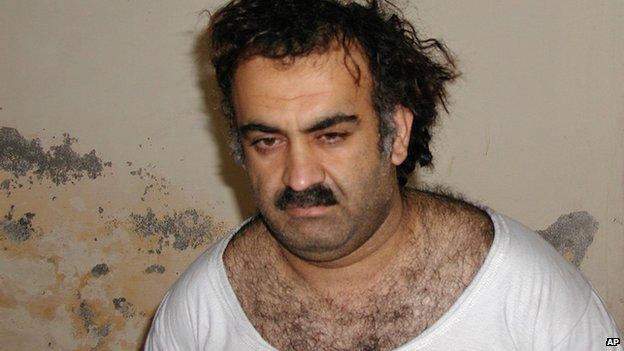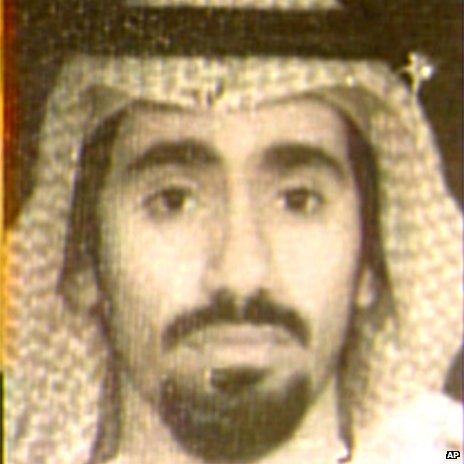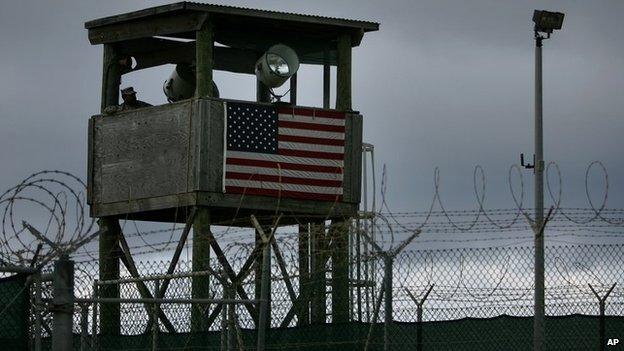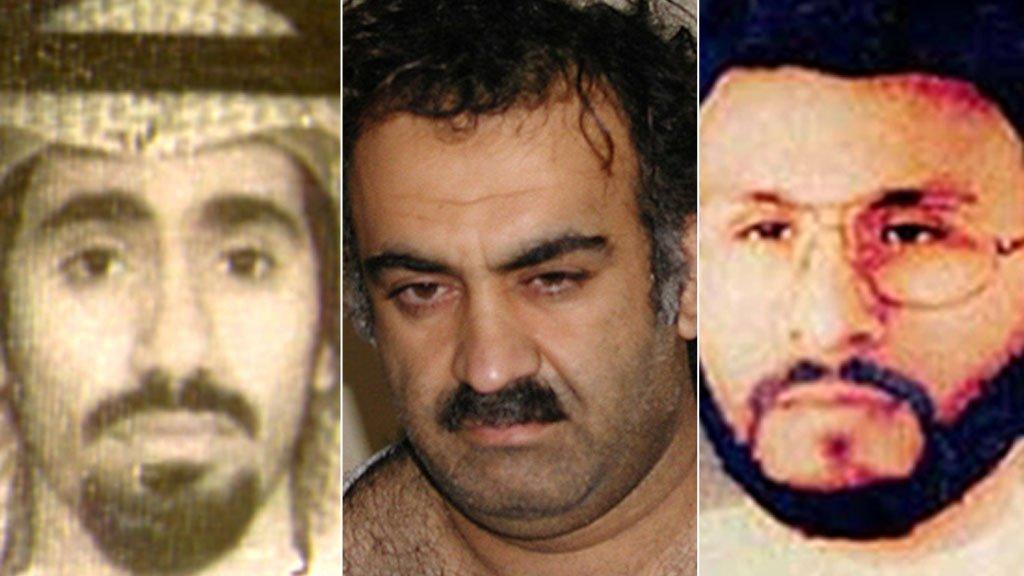CIA report: Who were the detainees?
- Published
A US Senate report has condemned the CIA's use of "enhanced interrogation" on al-Qaeda suspects after the 9/11 attacks.
Its 480-page summary details the treatment meted out, external to some of the organisation's leading figures.
Details of the interrogation of three of the most famous have now been made public.
Khalid Sheikh Mohammed, Abu Zubaydah and Abd al-Rahim al-Nashiri were captured after 9/11 and remain in US custody at Guantanamo Bay.

Khalid Sheikh Mohammed

Once described by US intelligence as "one of history's most infamous terrorists", Khalid Sheikh Mohammed is the self-confessed mastermind of the 9/11 attacks.
He claims to have personally beheaded the captured US journalist, Daniel Pearl.
Born in Kuwait to Pakistani parents, he graduated at a US university, before travelling to Afghanistan to fight the Soviets. There he is believed to have first met Osama Bin Laden.
He has been implicated in, or confessed to, a number of plots, including a scheme to blow up US airlines over the Pacific in 1995.
After his capture in Pakistan in 2003, he was taken to detention centres reported to be in Europe. According to the Senate report, he was subjected to waterboarding at least 183 times.
A CIA officer described the procedure as "a series of near drownings''. But the report said some of the information given by Mohammed was fabricated.
He remains in detention at Guantanamo Bay after a bid to try him in a New York court failed amid widespread opposition.

Abu Zubaydah

Abu Zubaydah is thought to have been al-Qaeda's chief recruiter in the 1990s, and later became a key organiser, linking Osama Bin Laden to other al-Qaeda cells.
Although he is not believed to be directly linked to the 9/11 attacks, he is thought to have run a number of camps in Afghanistan, where some of the attackers trained.
Born in Saudi Arabia, he used more than 30 aliases and gained a reputation as a master of disguise. He was captured in Pakistan in 2002 and taken to a detention camp reported to be in Thailand.
At the time, US intelligence officers said he was planning a terror attack in Israel. He was subjected to so-called "enhanced interrogation techniques" for days at a time and waterboarded more than 80 times.
On one occasion, the treatment left him "completely unresponsive with bubbles rising through his open full mouth".
Accounts in the Senate report describe how Zubaydah spent 266 hours in a tiny, confined space little bigger than a coffin, and 29 hours in an even smaller box just 21 inches (53cm) wide and 2.5ft (76cm) deep and tall.
In getting permission to use harsh treatment on Zubaydah, US Justice Department lawyers "relied on inaccurate CIA representations" about him, the report found.
He is now being held at Guantanamo Bay prison camp.

Abd al-Rahim al-Nashiri

Abd al-Rahim al-Nashiri came to prominence as the suspected orchestrator of the terrorist attack on the USS Cole, a destroyer targeted by suicide bombers while it was docked in the port of Aden, Yemen.
According to US intelligence, the Saudi-born Islamist was the leader of al-Qaeda's operations in the Gulf region.
Apart from the USS Cole attack, which killed 17 sailors, US spy chiefs believed the 49-year-old was involved in plots against a range of Western targets in the UAE, Saudi Arabia, the Straits of Gibraltar, Morocco and Qatar.
He allegedly fought with the Taliban in Afghanistan and was involved in earlier Chechen and Tajik insurgencies.
After being arrested in Dubai in 2002 he was held four years in several secret CIA facilities around the world, including in Poland and Thailand.
During this time he endured water-boarding and mock executions, according to the report.
In 2006 he was transferred to the Guantanamo Bay detention facility, where he has been held ever since.
- Published10 December 2014

- Published9 December 2014

- Published9 December 2014
